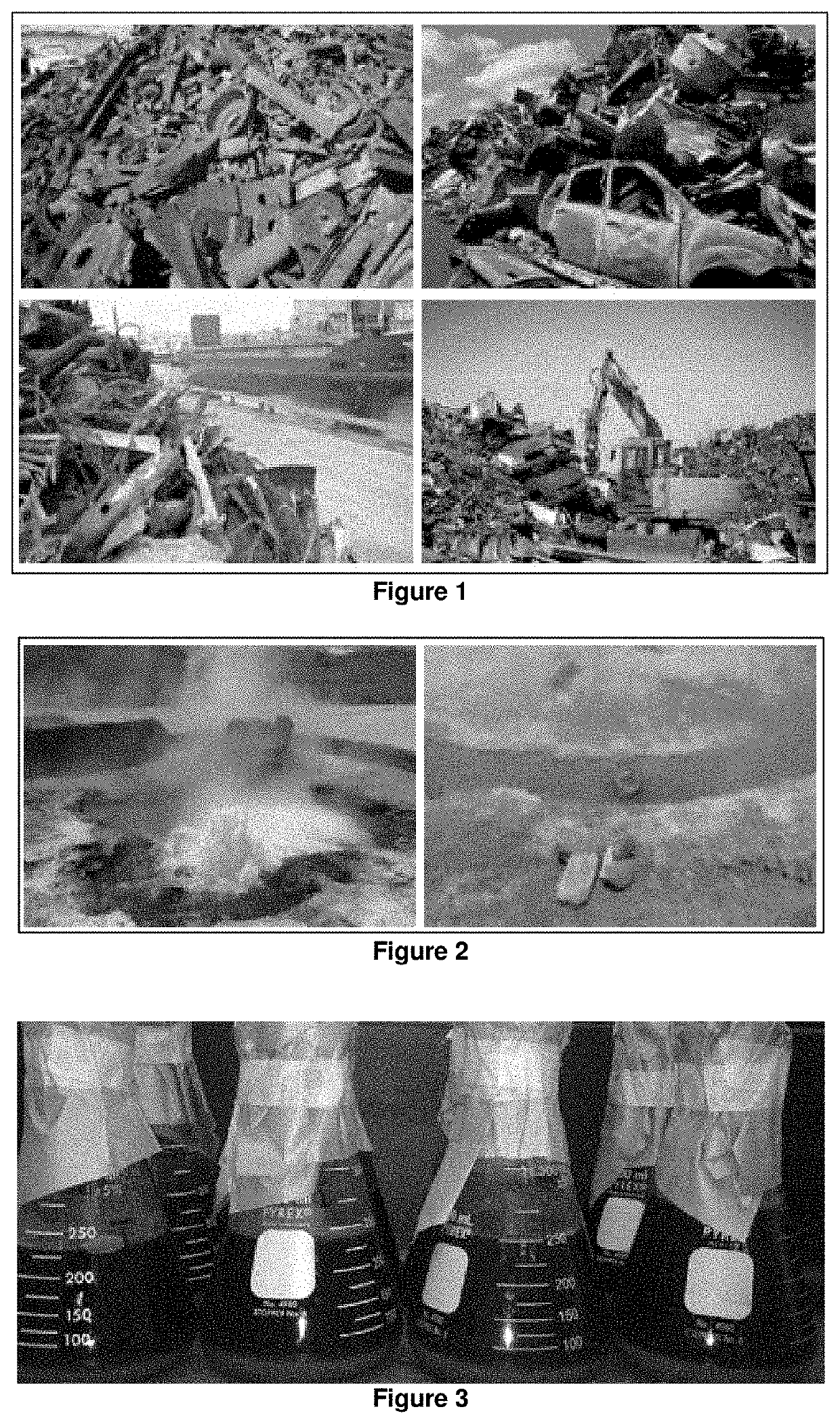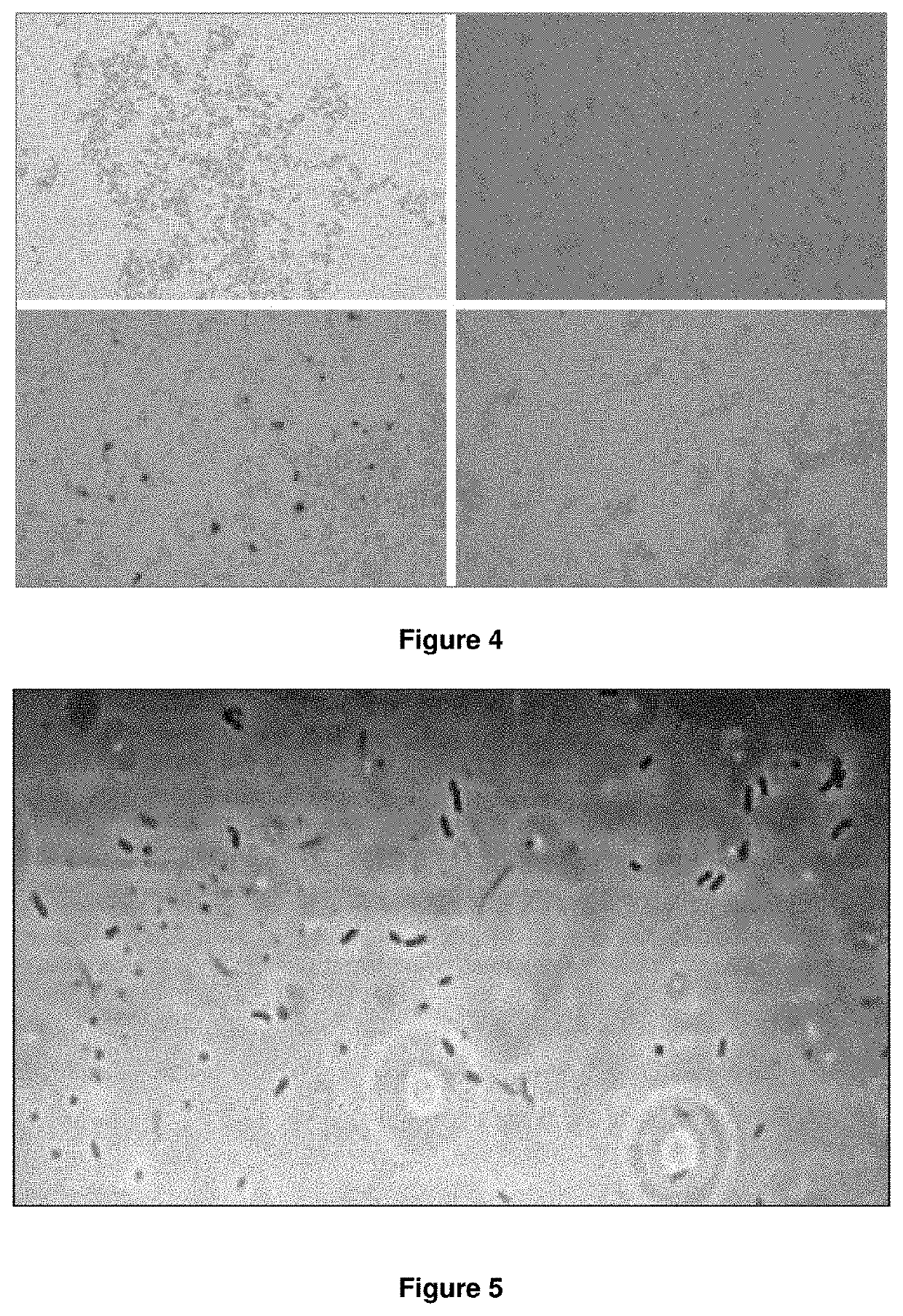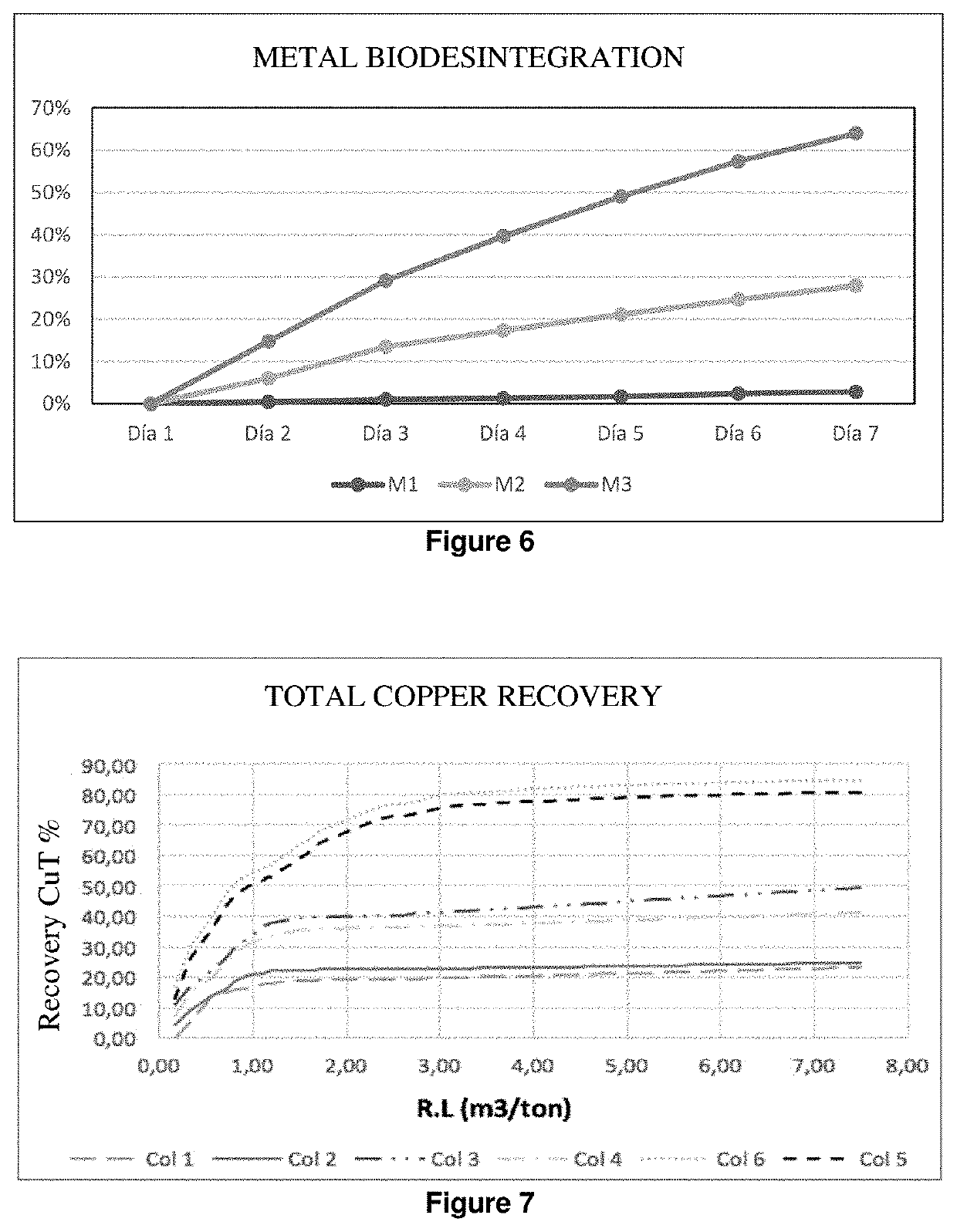Method of biodesintegrating metal scrap with a bacterial consortium adapted to high concentrations of ferrous sulphate and ferric sulphate
a metal scrap and biodegradable technology, applied in the field of industrial waste disposal and the circular economy of scrap metal, can solve the problems of heavy metal contamination, industrial waste generation, and serious threat to living organisms in the ecosystem, and achieve the effects of reducing the number of metal scraps
- Summary
- Abstract
- Description
- Claims
- Application Information
AI Technical Summary
Benefits of technology
Problems solved by technology
Method used
Image
Examples
example 1
[0063]The El Tatio Geothermal Field located in the Andean highlands of northern Chile at 4,200 m.a.s.l., is one of the highest geyser areas in the world. Approximately 80 active geysers have been documented, being the largest geyser field in the southern hemisphere and the third largest in the world, preceded by Yellowstone National Park, United States, and The Valley of Geysers in Kamchatka, Russia (Glennon and Pfaff, 2003). It is a complex geothermal field, which allows the development of microbial communities such as bacteria and archaea, which live under unique and extreme environmental conditions, including a varied temperature range, intense ultraviolet radiation, the presence of metals, metalloids and high concentrations of salts. (Phoenix et al., 2006; Alsina, 2013).
[0064]The diversity of the species that exist in a given habitat is a consequence of the relationship between organisms and the environment. From an ecological point of view, it is of intere...
example 2
ic Characterization of Cultured Microorganisms
[0069]Different observations were made under microscopy, in order to obtain a first approximation of the morphology of the microorganisms present and to determine if they are mobile, the procedures used are:
[0070]Slop Drop Method: This procedure is the simplest way to observe living organisms, it provides information on the morphology, size, color and mobility of the bacteria. However, due to the lack of contrast with the environment, it is a practice that is used only for the observation of movement. Take a drop (10 μl) in a liquid culture using a sterile Pasteur pipette, it was placed in the center of a coverslip, then the excavated slide was placed on the coverslip and a drop of immersion oil was placed, in order to observe with objective (100×).
[0071]This technique allows observing the fast and rectilinear movement or turning and turning in those bacteria that have flagella. Immobile bacteria present a vibratory movement called Brown...
example 3
n of Total Genomic DNA
[0076]The genomic DNA was obtained from the bacterial inoculum generated from the environmental samples obtained in the El Tatio Geothermal Field, whose samples were mixed and cultivated in the 9K culture medium enriched with ferrous sulfate (FeSO4) adjusting the pH 1.0 to 3.5, with aeration and constant agitation. Once all the ferric sulfate (FeSO4) had been oxidized to ferric sulfate Fe2(SO4)3 and the number of bacteria in the sample was 108 cells / ml, the samples were taken to extract the genomic DNA.
[0077]The purification of the samples was carried out with PowerSoil® DNA Isolation Kit (MO BIO Laboratories, Carlsbad, Calif., USA) according to the manufacturer's instructions. The purified DNA was quantified in an Epoch spectrophotometer (Bio-Tek Instruments Inc, Winooski, Vt., USA), and its purity was verified by the absorbance ratio at 260 nm and at 280 nm (A260 / 280). For the identification of bacterial species, the 16S ribosomal DNA (rDNA) was amplified usi...
PUM
| Property | Measurement | Unit |
|---|---|---|
| temperature | aaaaa | aaaaa |
| temperature | aaaaa | aaaaa |
| pH | aaaaa | aaaaa |
Abstract
Description
Claims
Application Information
 Login to View More
Login to View More - R&D
- Intellectual Property
- Life Sciences
- Materials
- Tech Scout
- Unparalleled Data Quality
- Higher Quality Content
- 60% Fewer Hallucinations
Browse by: Latest US Patents, China's latest patents, Technical Efficacy Thesaurus, Application Domain, Technology Topic, Popular Technical Reports.
© 2025 PatSnap. All rights reserved.Legal|Privacy policy|Modern Slavery Act Transparency Statement|Sitemap|About US| Contact US: help@patsnap.com



